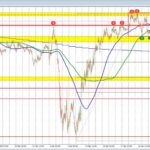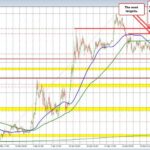
AUD/USD Trading Insights: Key Resistance Levels and Market Opportunities
Tháng 4 28, 2025
EUR/USD Breakout: Bullish Signals Amidst Market Volatility
Tháng 4 28, 2025An In-Depth Look at the Recent Weakness of the US Dollar: Causes and Implications
The US dollar has recently come under significant pressure, prompting analysts and financial experts to examine the underlying factors contributing to its weakness. Notably, predictions and forecasts point to a concerning trajectory for the dollar, raising questions about its dominance in global markets and potential long-term repercussions.
Bearish Forecasts for the Dollar
Recent analyses from noteworthy financial institutions like State Street indicate that the US dollar may face a significant decline in the coming years. They predict a drop of over 15% within two years, primarily fueled by yield convergence, concerns regarding the federal deficit, and the introduction of new tariffs that could accelerate this depreciation. Similarly, J.P. Morgan anticipates a 10-20% decline in the medium term against major currencies such as the euro (EUR) and Japanese yen (JPY). They have even noted the possibility of the EUR/USD exchange rate reaching as high as 1.29 in the long term. These predictions highlight a growing skepticism about the dollar’s resilience amidst shifting economic conditions and international trade dynamics. For further insights into the euro’s bullish momentum amidst consolidation, you can check out the analysis presented here.
Structural Challenges Facing the Dollar
A deeper examination of the dollar’s structural challenges reveals a re-emerging debate regarding its status as the world’s primary reserve currency. Analysts from BBVA emphasize the quintessential qualities necessary for a currency to sustain its reserve status: liquidity depth, substantial economic size, and institutional stability. In this context, the euro’s growing significance is notable, particularly given that its economic output on a Purchasing Power Parity (PPP) basis is now comparable to that of the United States. However, the euro’s potential ascendancy is hindered by ongoing challenges related to internal economic coordination within the European Union, which complicates the situation further.
Market Dynamics and Recent Volatility
Recent market dynamics paint a complex picture, showcasing uncharacteristic volatility with simultaneous declines across US stocks, bonds, and the dollar itself. Although J.P. Morgan has recorded brief periods of recovery—such as stabilization witnessed in late April—the overall trend appears to point towards an escalation in medium-term depreciation risks for the dollar. The triggers for this decline are multifaceted and include adverse tariff impacts on growth, a marked reduction in safe-haven demand, and a global shift in portfolio allocations moving away from historically unhedged USD exposures. Notably, China’s President Xi Jinping convened global CEOs to address US-China trade tensions, emphasizing stability and collaboration. For an in-depth look at these strategic moves, you can read more here.
State Street’s analyses reveal that the dollar may no longer offer the level of crisis protection that it has provided in past financial cycles, contributing to increasing uncertainty among investors. The perception of the dollar’s safety as a currency reserve is diminishing, prompting a reassessment of risk management strategies in the context of ongoing geopolitical tensions and economic unpredictability.
Conclusion: The Future of the US Dollar
As the landscape shifts, it becomes increasingly apparent that the US dollar faces a range of pressures that could reshape its role in the global economy. From bearish forecasts to structural challenges and evolving market dynamics, these factors collectively point towards a more precarious future for the dollar. The implications of this decline extend beyond immediate currency valuation and resonate deeply within global financial systems, necessitating careful monitoring by investors and policymakers alike. With ongoing pressure looming, stakeholders must adapt to a rapidly evolving economic environment characterized by uncertainty and change.
